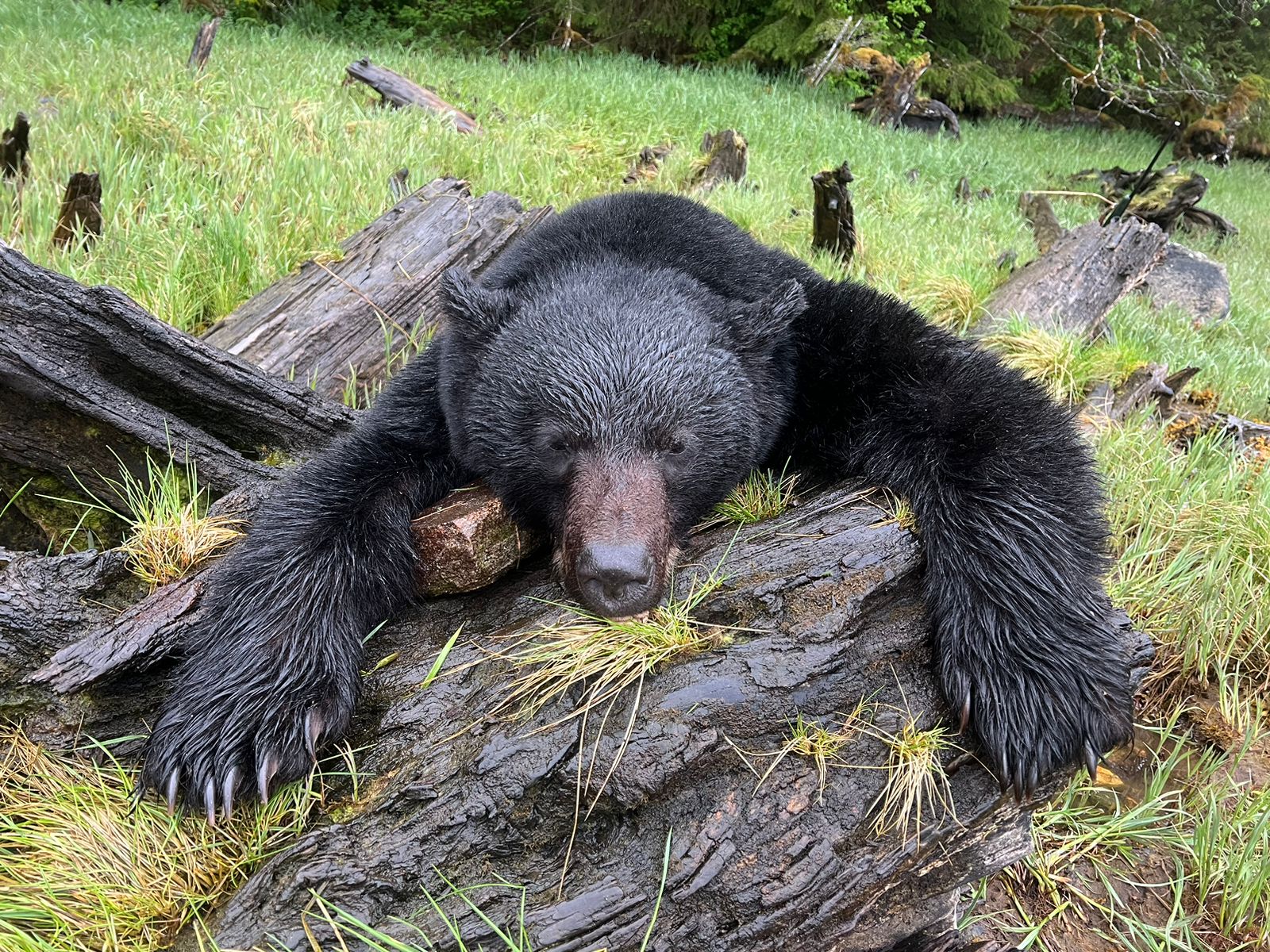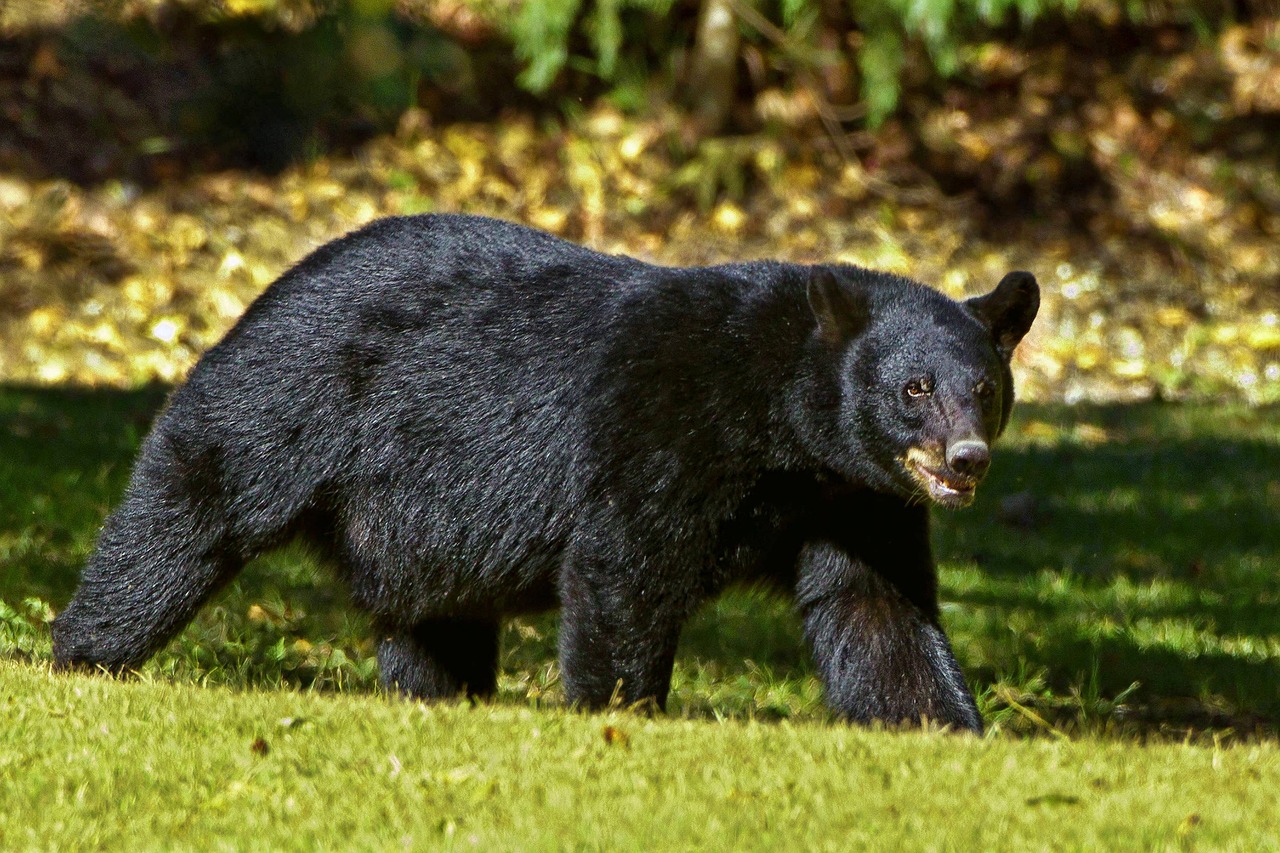
How to Field Judge a Trophy Black Bear: Signs of a Mature Boar
Field judging a trophy black bear is both an art and a science. Unlike antlered game, where size is easily measured, determining whether a black bear is a true trophy-class boar requires experience, patience, and an understanding of key physical and behavioral indicators. For hunters looking to harvest a mature black bear in northwestern British Columbia, knowing how to properly evaluate a bear before taking a shot is critical.
At Kildala Adventures, we specialize in spot-and-stalk black bear hunting, helping hunters identify and pursue large, dominant boars. This guide will teach you how to differentiate a true trophy from a younger bear, ensuring you make the most of your BC black bear hunt.

Key Physical Features of a Trophy Black Bear
A mature black bear has several distinct characteristics that separate it from younger bears and sows. The difference between a 250-pound bear and a 500-pound monster is more than just size—shape, proportion, and behavior all play key roles in identification.
1. Blocky Head with Small Ears
One of the most reliable ways to judge a big boar in the field is by looking at the head-to-ear ratio.
- Mature Boars: Have a wide, blocky head with ears that appear small and set farther apart.
- Younger Bears & Sows: Have a narrower head, and their ears look larger and more prominent in proportion.
✅ Tip: If the ears appear small and positioned to the sides rather than on top of the head, it’s likely a mature boar.
2. Thick Shoulders & Muscular Build
Big black bears have noticeable muscle mass, particularly in the shoulders and neck.
- Mature Boars: Have a thick, humped shoulder and a broad chest.
- Younger Bears: Appear leaner with a smoother body shape and less pronounced muscle definition.
✅ Tip: If the bear walks with a rolling, heavy-footed gait, it’s likely an older, trophy-class boar.
3. Low-Hanging Belly & Wide Stance
A true trophy bear will have a wide-bodied frame, often with a belly that sags close to the ground.
- Mature Boars: Their stomach will sway when they walk, and their legs will appear short due to the bear’s sheer mass.
- Younger Bears: Stand taller with longer-looking legs because their bodies are not as heavy yet.
✅ Tip: If the bear’s belly almost touches the ground when walking, it’s a sign of a heavyweight boar.
4. Thick Neck & Broad Muzzle
Older boars develop thicker necks and wider muzzles, giving them a stout, powerful appearance.
- Mature Boars: Have a short, thick-necked look with a broad, blunt muzzle.
- Younger Bears & Sows: Tend to have longer, thinner necks and narrower, pointed muzzles.
✅ Tip: If the bear’s neck looks thick and blends into its shoulders with little definition, it’s likely a trophy bear.
Behavioral Clues: How Trophy Boars Act
Even if you spot a large bear, observing its behavior can help confirm whether it’s a dominant, mature boar.
1. Solitary & Territorial
- Trophy-class boars are lone travelers and tend to push smaller bears away from feeding areas.
- Sows and younger bears often feed in pairs or groups.
✅ Tip: If the bear is alone and seems unbothered by other bears, it’s likely a dominant boar.
2. Slow, Confident Movements
- Mature boars walk with a deliberate, rolling gait.
- Younger bears are more jittery and quick-moving.
✅ Tip: If a bear moves slowly and deliberately, as if it owns the territory, it’s a good candidate for a trophy bear.
3. Feeding & Marking Behavior
- Mature boars rub trees, scratch logs, and leave scent marks to claim their territory.
- Younger bears focus on feeding and tend to avoid aggressive marking behaviors.
✅ Tip: If the bear pauses to mark trees or scratch logs, it’s likely a mature, dominant boar.
Judging Size at a Distance
Many hunters overestimate the size of a bear, especially when spotting from a distance. Here are some tricks to avoid misjudging size:
1. Compare the Bear to Its Surroundings
- Look at the legs: If they appear short relative to the body, the bear is likely large.
- Compare with nearby logs or bushes: Trophy bears often appear out of proportion to their surroundings.
2. Observe How the Bear Walks
- A big bear walks slowly and confidently, while a smaller bear moves quickly and cautiously.
✅ Tip: If you’re unsure, watch the bear for several minutes before deciding to stalk closer.
Why Proper Field Judging Matters
Properly identifying a mature boar ensures a quality harvest and supports sustainable bear hunting.
- Harvesting Older Boars Helps Population Management: Leaving younger bears and sows to reproduce keeps bear populations strong.
- Maximizing the Trophy Potential: A bear that has reached peak maturity makes for an impressive mount and an unforgettable hunt.
Why Hunt with Kildala Adventures?
At Kildala Adventures, we specialize in helping hunters identify and harvest true trophy-class black bears. Our experienced guides know how to spot and judge mature boars in the field, ensuring you take home a bear that meets your expectations.
- Expert Field Judging: We help hunters correctly identify mature boars vs. younger bears.
- Exclusive Hunting Areas: Our remote locations have low hunting pressure, allowing bears to reach trophy size.
- High Success Rates: Our hunters consistently harvest record-class black bears in British Columbia.
If you’re serious about hunting a trophy black bear, contact Kildala Adventures today to book your spot for an unforgettable hunting experience.
Field judging a black bear takes experience, patience, and a trained eye. By understanding physical features, behavior, and movement patterns, you can confidently identify a true trophy-class boar in the field.
Hunting in northwestern BC provides one of the best opportunities to harvest a record-class black bear, but choosing the right bear is just as important as making the right shot. When you book with Kildala Adventures, you’ll be guided by experts who know how to locate and identify the biggest bears in the region.
Ready to hunt a true trophy black bear? Book with Kildala Adventures and experience the best black bear hunting in British Columbia!
